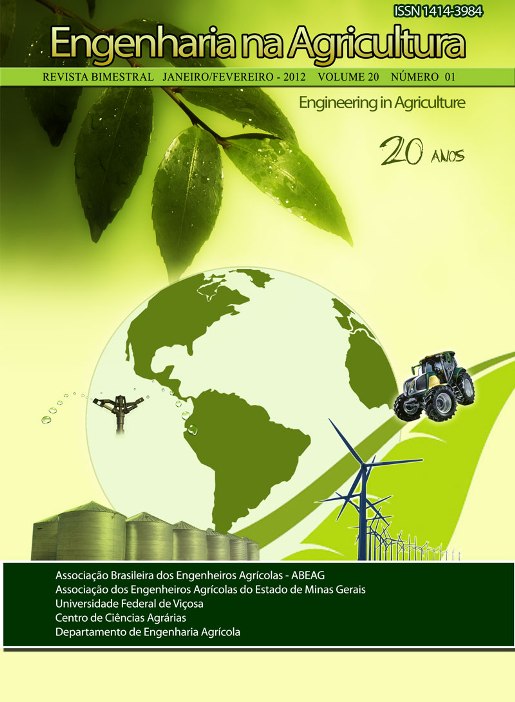RELATIONSHIP BETWEEN PLASTICITY LIMIT AND THE OPTIMUM MOISTURE FOR COMPACTION OF A DARK-RED LATOSOL (OXISOL) IN DIFFERENT CONDITIONS OF USE
DOI:
https://doi.org/10.13083/reveng.v20i1.189Keywords:
Compactação do solo, degradação do solo, solo argiloso.Abstract
The correlation between plasticity limit and the optimum moisture for compaction is highly useful to assess soil for different uses such as machine-soil interaction. This work was done to determine the relationship between the plasticity limit and the compacting optimal moisture of a dark-red latosol (oxisol) in different conditions of use. The experiment was done in an experimental field of the Agência Rural, located in the city of Anápolis and the Laboratory of Soil Mechanics of the University and the Exact and Technological Sciences unit of the Universidade Estadual of Goiás. The experiment was installed with three replications in the completely randomized design, in 4 x 3 factorial, (four types of soil use (soil under no-tillage corn, soil under conventional tillage with soybean, fruit orchard and a degraded pasture) and three soil depths (0 to 10 cm, 10 to 20 cm and 20 to 30 cm).. The results showed that the lowest compaction optimal moisture was in the corn cultivated soil. The values of plastic limit were higher than the compaction optimal moisture in all types of soil use. The use of agricultural machines close to upper limit of the friable state causes compaction in all types of soil use.Downloads
Downloads
Published
How to Cite
Issue
Section
License
Authors who publish with this journal agree to the following terms:
The author(s) authorize(s) the publication of the text in the journal;
The author(s) ensure(s) that the contribution is original and unpublished and that it is not in the process of evaluation by another journal;
The journal is not responsible for the views, ideas and concepts presented in articles, and these are the sole responsibility of the author(s);
The publishers reserve the right to make textual adjustments and adapt texts to meet with publication standards.
From submission, the author is fully conceding the paper's patrimonial rights to the publication, but retaining the owner of its moral rights (authorship and paper's identification) according to Creative Commons Attribution-Noncommercial.








 Licensed by
Licensed by 